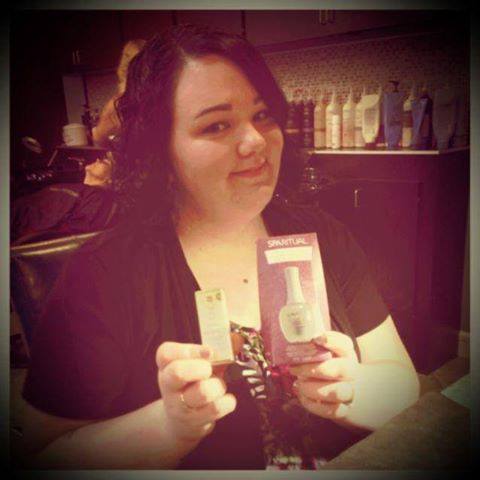During my zookeeping and environmental education career, I have interacted and worked with a variety of animals, including brown bears, wolverines, red foxes, moose, camels, mountain goats, dolphins, sea lions, raccoons, porcupines, snakes, raptors and ravens. I am also a young adult author, and my debut novel ESSENCE was released in June 2014 by Strange Chemistry Books. Ask me anything!
Hi Kelsie! Repetitive behaviors like pacing are easy ones to watch for in penguins. Changes in appetite are usually fairly prevalent as well, and many penguins will actually pluck their own feathers (usually from their bellies) when they are stressed.
Hope this is helpful!
Hi there! I have actually already answered this question, so I will copy and paste my answers here for you:
The first step in designing an enrichment program is to research the species’ natural behaviors and physiology. Once you have a handle on what the animal “likes to do,” the next step is to design a goal-oriented plan that identifies the species-specific behaviors are desired from that animal (digging, nesting, etc.).
Enrichment plans must include how the enrichment will be developed, how it will ensure the animal’s safety, and how it will be monitored to document the animal’s response to it. (Interns and/or volunteers usually do the majority of monitoring.)
Understanding that many animals often require a “breaking in period” where they size up new additions to their environment, trainers should make sure to keep detailed records to ensure the animal eventually utilizes and is stimulated by the enrichment provided. If the enrichment is not deemed to be effective, a plan should be in place for adapting, altering and/or removing it.
Hi DJ, this is such a broad question that I would recommend actually researching this elsewhere. I wouldn't even know where to start--except to say we should always think about the big picture when we make decisions that affect the entire planet. Best of luck to you!
Hi Belle! Cats will typically display very different behaviors when they are playing versus when they are fighting. When they are playing, their posture is quite relaxed and "loose," while fight posture is typically very tense, with pinned ears and coiled muscles. Also, cat fights are typically very short and VERY vocal, with lots of hissing, howling and screaming--generally followed by the loser's hasty retreat. Cat wrestling matches are usually fairly quiet, and the wrestling may go on for several minutes with short breaks in between for the animals to regroup and "catch their breath." Hope this helps!
Day Trader
 What's the difference between a trader and a hedge fun guy?
What's the difference between a trader and a hedge fun guy?
Nail Technician
 How sanitary are the pedicure basins really?
How sanitary are the pedicure basins really?
Fashion Model
 Do you feel objectified when you're standing around in skimpy outfits?
Do you feel objectified when you're standing around in skimpy outfits?
Hi MRaines! Your sister actually won't get to pick which animal she majors in; instead, she will receive an understanding of the biology, physiology and natural history of many types of animals. This way, she will be very well-rounded when she graduates.
This is very helpful, because she will probably have to "work her way up" to a shift with her dream animals. Most of "glamorous" animal shifts are very competitive, so zookeepers often have to put in their time before they can secure these positions!
Excellent question, Jade, and so sorry for the delay in answering!
Fairy penguins primarily eat fish, squid and krill in the wild, so this diet can be replicated fairly easy in a zoo environment. An adult penguin generally consumes between 5.5 and 8.5 ounces of food per day, and zoos often rotate through a variety of low-fat fish and high-fat fish, as well as squid and krill when available. Multi-vitamins are also often provided, as well as vitamin E and thiamin supplements.
Hand-feeding is generally recommended with these animals, as individuals tend to compete for diets, and it is very difficult to monitor consumption otherwise. Feeding time is also a great opportunity for training and enrichment!
Dogs definitely have a great sense of smell, but you're right. There are many other members of the animal kingdom whose senses of smell is just as good, if not better. Therefore, trainability is certainly a huge factor in our decision to use dogs as service animals.
Some other powerful sniffers are horses, cows, mice, rats and opossums (just to name a few). And the reputed best sniffer in the world is the African elephant. Definitely don't want those tramping down the airport security lines!
-OR-
 Login with Facebook
Login with Facebook (max 20 characters - letters, numbers, and underscores only. Note that your username is private, and you have the option to choose an alias when asking questions or hosting a Q&A.)
(A valid e-mail address is required. Your e-mail will not be shared with anyone.)
(min 5 characters)
By checking this box, you acknowledge that you have read and agree to Jobstr.com’s Terms and Privacy Policy.
-OR-
 Register with Facebook
Register with Facebook(Don't worry: you'll be able to choose an alias when asking questions or hosting a Q&A.)